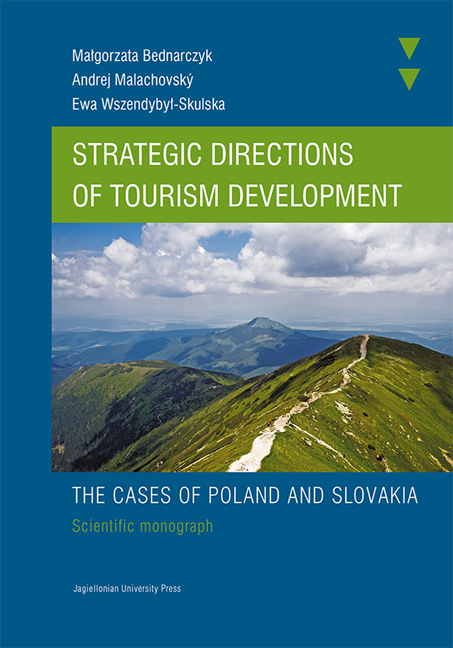Book contents
- Frontmatter
- Contents
- Introduction
- PART I European directions of strategic development of tourism
- 1 The background for the European strategy for tourism development
- PART II Strategic directions for tourism development: a case of Slovakia
- PART III Innovation as a key success factor of the tourism development strategy in Poland
- Conclusions
- References
- List of Figures
- List of Tables
- Appendix
1 - The background for the European strategy for tourism development
from PART I - European directions of strategic development of tourism
Published online by Cambridge University Press: 10 January 2018
- Frontmatter
- Contents
- Introduction
- PART I European directions of strategic development of tourism
- 1 The background for the European strategy for tourism development
- PART II Strategic directions for tourism development: a case of Slovakia
- PART III Innovation as a key success factor of the tourism development strategy in Poland
- Conclusions
- References
- List of Figures
- List of Tables
- Appendix
Summary
The background for the European strategy for tourism development
Strategic tourism development in the European Union and rising its competitiveness in the global market constituted a cornerstone for creation of common action frames for all member states with regard to creation of European tourism policy. In communication from the European Commission from 2006 “A renewed EU Tourism Policy: Towards a stronger partnership for European Tourism” is discussed (COM (2006) 134). In this document special attention was oriented toward supporting tourism enterprises’ competitiveness and creation of conditions for their development. Another important point was supporting cooperation between member states through exchange of best practices. The common policy for development of the European tourism sector has been encompassed in the most important strategic documents of the European Union. They constitute the basic formal frames for practical actions on each and every level of tourism management in UE member states, taking into consideration their cultural specificity, organizational differentiation, potential and competencies.
Tourism in the Europe 2020 strategy
On 26 March 2010, the European Council agreed on the key elements of the new strategy named Europe 2020 – A strategy for smart, sustainable and inclusive growth. The rules of the new strategy sum up the European model of social market economy with a strong environmental dimension. The strategy elements were formally adopted on 17 June 2010.
The strategy of UE development covers 5 agreed strategic goals: investment in R'D, education, energy – climate change, employment rate and reduction of poverty and social exclusion. All targets should refer to growth, employment and increase of UE competitiveness. These are:
— To raise the employment rate of the population – aged 20–64 from the current 69% to at least 75%.
— To achieve the target of investing 3% of GDP in R'D in particular by improving the conditions for R'D investment by the private sector, and develop a new indicator to track innovation.
— To reduce greenhouse gas emissions by at least 20% compared to 1990 levels or by 30% if the conditions are right, increase the share of renewable energy in final energy consumption to 20%, and achieve a 20% increase in energy efficiency.
- Type
- Chapter
- Information
- Strategic Directions of Tourism DevelopmentThe Cases of Poland and Slovakia - Scientific Monograph, pp. 13 - 24Publisher: Jagiellonian University PressPrint publication year: 2012



